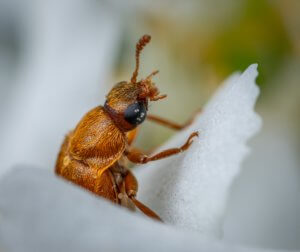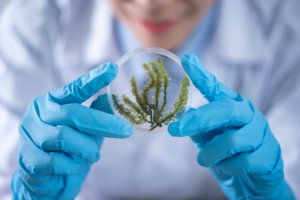Awesome science news from the web (27/07)
Once again, we bring you the awesome science news from the web; with tips on how to talk about these topics with kids – questions to ask and discussions to have.
“Science is a way of thinking much more than it is a body of knowledge.”
-Carl Sagan
1. Fossil discovery reveals supercontinent history we dino about
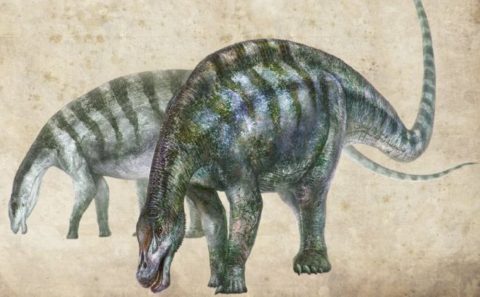
History has been rewritten after the discovery of the oldest member of a group of large, long-necked dinosaurs called sauropods. The 174-million-year-old Lingwulong shenqi was unearthed by Chinese and British archaeologists. It was previously thought that East Asia separated from the supercontinent landmass called Pangaea early on since East Asia lacked the range of sauropods found on other parts of the supercontinent. The discovery suggests that sauropods flourished before Pangaea split apart. Link to story
| Sharing with kids: Scientists discovered a new type of giant, long-necked dinosaur that they named the Lingwu Amazing Dragon. It is the oldest one of its kind, which includes its cousin, the brachiosaurus. The dinosaur lived 174 million years ago, when all the continents were joined together in one big supercontinent called Pangaea.
Questions to ask: What does an archaeologist do? How can they tell how old one fossil is compared to another one? Suggested Answer: They study history and pre-history by digging up and analysing old objects and the remains of previously living things i.e. fossils. Older things are usually found in deeper layers. They can also use radiocarbon dating. All living things contain an element called carbon. A very small amount of carbon is radioactive. Radiocarbon is lost when living things die. We can estimate how long something has been dead by measuring how much radiocarbon is left compared to normal carbon. (It only works for things that are <50 000 years old though, so not Lingwu Amazing Dragon!). |
2. Towards life on Mars: water you waiting for?
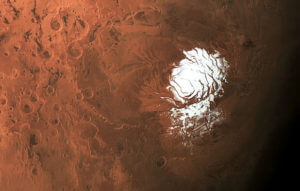
Liquid water probably exists underneath a southern polar icecap on Mars according to research headed by Italian astrophysicists. The water is however too salty and cold to sustain life. A radar instrument sent radio waves to and beneath Mars’ surface and measured the intensity of reflections or ‘echoes’. Bright echoes 1.5 km were found beneath Mars’ surface when the radiowaves were likely reflected by the interface of liquid water and rock. The results are exciting in terms of the idea that Mars once supported life like Earth. Link to the story
|
Sharing with kids: Liquid water is essential for all living things. Earth is the only planet that we know of that has liquid water and living things on it. But did you know that Mars used to have water and probably even had living things on it too? But all the liquid water was boiled off when Mars lost its atmosphere. Many scientists are working hard to show that Mars has liquid water underneath its surface (which may be even contains simple forms of alien life!). Questions to Ask: What are the three states of water? Why is liquid water essential for life? Suggested Answer: Solid (ice), liquid (e.g. drinking water) and gas (e.g. shower steam). Living cells are separated from the environment by a barrier called a cell membrane. Liquid water allows things like nutrients and waste materials to be easily dissolved (think how Milo disappears into milk) and therefore be easily carried in and out of cells. Without liquid water, cells can’t get what they need to live from the environment and can’t get rid of waste. |
3. Hunting down useless, toxic old cells – the key to the fountain of youth?

Researchers at the Mayo Clinic, Rochester are cautiously excited about a drug combination that has the potential to extend our lives. The wonder drug combo ‘D+Q’ works by eliminating body cells that are too damaged to do their normal job and that send out chemicals to make their neighbours share the same doomed fate. The researchers showed that transplants of very small numbers of these dysfunctional cells accelerated aging in young mice. D+Q reversed the process in artificially-aged young mice and prolonged life by 40% in naturally aged mice. Link to the story
|
Sharing with kids: As we get old, cells in the body that no longer do their jobs are stopped from dividing. These cells still cause trouble by giving out chemical signals that damage their neighbors. Scientists think that we might live longer if we get rid of old damaged cells that are a bad influence. One way might be by using medicines. Questions to Ask: Why is it important to stop damaged, useless cells from dividing? What other ways besides taking medicines might we increase our chances of living longer? Suggested Answer: You only want healthy cells that do their job to keep dividing. You do not want useless cells dividing, taking over and becoming a cancer tumour. A healthy diet and exercise. |
4. Get hyped! Super-fast pods to revolutionise intercity travel
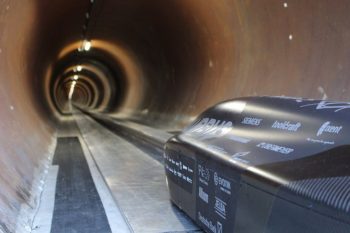
German engineering students have again won the third annual SpaceX pod competition held in California. The team’s winning pod clocked a cool top speed of 457km/h. The Germans also won an innovation prize for demonstrating their pod’s levitation capabilities. The competition is part of SpaceX founder Elon Musk’s vision to build a super-fast underground transport system, dubbed a ‘hyperloop’, that addresses current traffic issues. The pods will ideally travel in an almost airless underground tunnel, which has minimal air resistance. Link to the story
|
Sharing with kids: Engineers want to make an underground transport system that will let us travel super-fast between big cities. A trip between Los Angeles and San Francisco would only take half an hour instead of taking six and a half hours. People will travel in pods inside underground tunnels that have almost no air (but there will be air inside the pods for people to breathe!). No air means there are no air particles to slow down the pods. We call a force that slows down an object’s movement through liquid, air, or gas a ‘drag force’ or resistance. Questions to Ask: How would a super-fast underground transport system affect the way people live and work? Suggested Answer: This question is designed to get kids to put their thinking caps on! E.g. people would spend less time in traffic and that people could live far from where they work in the city. The ability to live far from work would mean people’s living places would be spread out instead of ‘bunched up’ near the city. |
5. Hot/cool new evidence that humans have a role in climate change
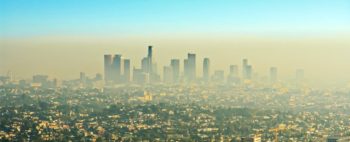
Concerned about the extreme weather events (record-breaking floods, heatwaves and fires) going on lately in the Northern Hemisphere? Well, MIT researchers provide new evidence that human activity is a considerable factor in explaining changes in Earth’s seasons. The researchers were interested in looking at the magnitude of temperature changes in the troposphere, the atmospheric layer from which the weather we experience mainly comes. Using statistics and modeling simulations, they showed that variability in 38 years’ worth of data on the temperature in the troposphere could be significantly explained by human-related emissions of greenhouse gases. In contrast, the chances of the data being explained by natural variability were extremely small (5 in 1 million). Link to the story
|
Sharing with kids: You might have heard of many weird things about the weather in the top half of the world (the Northern Hemisphere) lately. Things like many fires in normally colder places like the Arctic and Sweden, and having lots of floods and very hot weather for a long time in Japan. Scientists think that the reason why we’re seeing more and more of this weird weather is related to things that humans started doing about 300 years ago. These activities release ‘greenhouse’ gases. Questions to ask: What is the ‘greenhouse effect’? How is it related to climate change? Suggested Answer: The natural greenhouse effect: heat from the sun’s rays is trapped near the Earth’s surface by natural gases in the atmosphere, keeping the Earth warm, like a greenhouse. The man-made greenhouse effect: In the last few centuries, more greenhouse gases have been added by many human activities (e.g. gas/oil/coal burning, making plastics, using fridges, hairsprays). Because of this, Earth has become warmer. This has many effects such as affecting the weather (climate change) and causing sea levels to rise, which in turn will affect how life on Earth. |
Further reading: our last week’s science stories and our blog on the importance of science literacy.
Did you like what you read? Want more science delivered in fun ways? Follow us on different social media channels using the links below.
Better yet, subscribe to InquiBox to get different science mini-projects delivered home.




